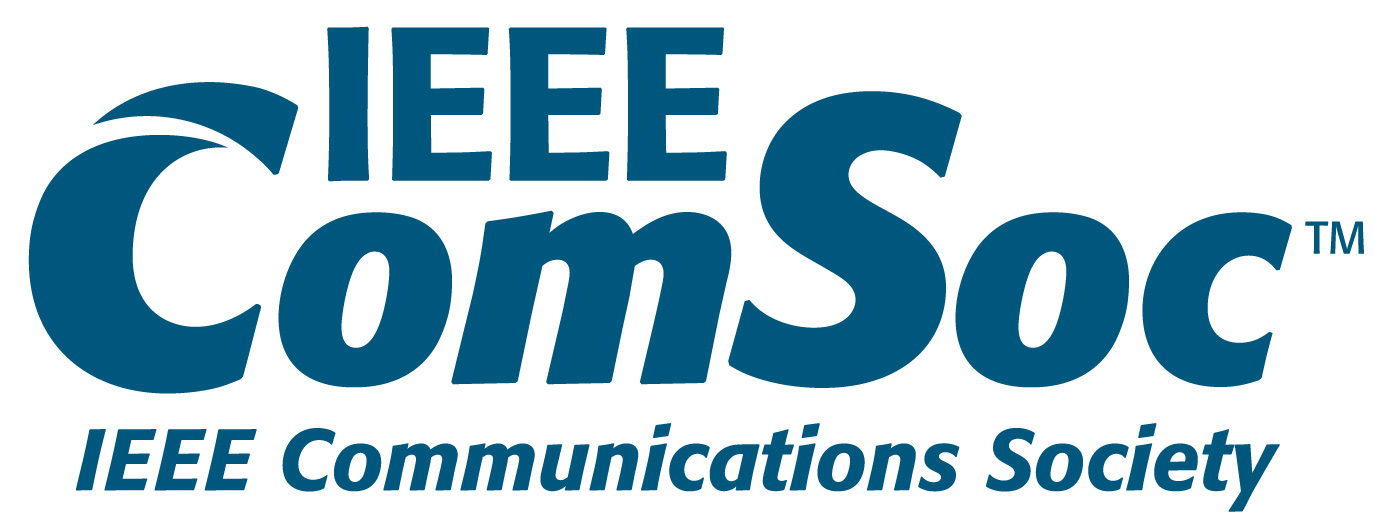Workshop on 5G Technologies for Tactical and First Responder Networks
Tuesday, Oct. 23, 2018
Workshop: 8:00 a.m. - 5:30 p.m.
Networking Reception: 6:00 p.m - 8:00 p.m.
The Johns Hopkins University Applied Physics Laboratory
11100 Johns Hopkins Road, Laurel, Maryland 20723-6099
Parsons Auditorium (Lobby 1) - Campus Map and Directions
View the recordings on IEEE.tv
View the pictures from the event.
Download the Call for Participation Flier
All Events
2021 IEEE 5G Workshop on First Responder and Tactical Networks (WFRTN)
2020 IEEE 5G Workshop on First Responder and Tactical Networks (WFRTN)
2019 IEEE 5G Workshop on First Responder and Tactical Networks (WFRTN)
2018 IEEE 5G Workshop on First Responder and Tactical Networks (WFRTN)
|
|
|
|
|
|
||
|
|
|
|
|
|
|
Overview
5G is not just the next evolution of 4G technology; it’s a paradigm shift. Not only is 5G evolutionary (providing higher bandwidth and lower latency than current-generation technology), more importantly, 5G is revolutionary—because it is expected to enable fundamentally new applications with much more stringent requirements in latency and bandwidth. 5G should help solve the last-mile problem and provide broadband access to the next billion users globally at much lower cost because of its use of new spectrum and its improvements in spectral efficiency.
Today, several standards organizations and forums, namely IEEE, 3GPP, and ITU, are working on defining the architecture and standardizing various aspects of 5G technologies. However, little has been studied to explore how 5G technologies can be useful to tactical and first responder networks. It is important to investigate how tactical and first responder communities can take advantage of 5G technologies to support massive bandwidth, massive sensing, and massive control type applications.
IEEE is hosting the workshop in collaboration with the JHU Applied Physics Lab. The workshop's focus is to discuss the applicability of 5G technologies for tactical and first responder networks and related opportunities and challenges. The workshop will provide a platform to bring together 5G experts from industry, academia, and the standards, regulator, and defense communities to discuss various 5G-specific use cases and requirements. The one-day event has invited speakers from DARPA, DHS, FCC, NIST, NSF, Columbia University, NYU, Intel, National Instruments, Nokia, AT&T, CERDEC, IEEE, and 3GPP. This workshop will be a catalyst to develop relevant use cases, drive standards, and investigate deployment suitable for tactical and first responder networks.
For more information, please contact Ashutosh Dutta, IEEE Future Networks Initiative Co-Chair, Johns Hopkins University. Email: This email address is being protected from spambots. You need JavaScript enabled to view it. or This email address is being protected from spambots. You need JavaScript enabled to view it. Tel: 908-642-8593
Agenda:
Speaker Biographies
 Leland Brown, Techology Development Manager, Intel Federal. Leland joined the Intel Organization in 2016. Prior to Intel, Leland has 16 Years of experience in the Wireless Networking Industry for Military Applications(US Army CECOM), Commercial Cellular Wireless Network Design and Capacity Planning, Connected Device Interoperability and Wireless Technology Applications Management. Current assignment is with Intel Federal, the technology enabling organization and interface of Intel Corp for United States Government (USG) solutions. Leland’s role as Technology Development Manager (TDM) encompasses a strategic focus on investment in Advanced Wireless technology’s(5G, SDR, beamforming, Adaptive RF protocol & Adaptive Frequency) for USG applications and research opportunities.
Leland Brown, Techology Development Manager, Intel Federal. Leland joined the Intel Organization in 2016. Prior to Intel, Leland has 16 Years of experience in the Wireless Networking Industry for Military Applications(US Army CECOM), Commercial Cellular Wireless Network Design and Capacity Planning, Connected Device Interoperability and Wireless Technology Applications Management. Current assignment is with Intel Federal, the technology enabling organization and interface of Intel Corp for United States Government (USG) solutions. Leland’s role as Technology Development Manager (TDM) encompasses a strategic focus on investment in Advanced Wireless technology’s(5G, SDR, beamforming, Adaptive RF protocol & Adaptive Frequency) for USG applications and research opportunities.
Leland’s Initial assignment at Intel Corporation was served in the Communications and Devices Group(iCDG) supporting the pre Silicon and 3GPP adoption of 5G standards through scaling 5G technology across multiple application platforms, conducting field trail testing, device interoperability development and 5G technology demonstrations. Leland holds a BSEE from Lehigh University.
 Dr. Antonio DeSimone is the Chief Scientist for Communications Systems at Johns Hopkins University’s Applied Physics Laboratory. He is the principal technical leader for APL's efforts in National Security Communications. Prior to joining APL, he led product teams in Lucent's Optical Networking Unit and Lucent Digital Video, a pioneer in high-definition television encoding. He started his career at AT&T Bell Laboratories, where he did work in network design, performance analysis, network and computer security, wireless, digital video, and storage networking. Dr. DeSimone holds ten patents in data networking, Web caching and other Internet applications and has authored numerous technical publications. He holds Ph.D. and Sc.M. degrees from Brown University and a B.S. from Rensselaer Polytechnic Institute, all in Physics.
Dr. Antonio DeSimone is the Chief Scientist for Communications Systems at Johns Hopkins University’s Applied Physics Laboratory. He is the principal technical leader for APL's efforts in National Security Communications. Prior to joining APL, he led product teams in Lucent's Optical Networking Unit and Lucent Digital Video, a pioneer in high-definition television encoding. He started his career at AT&T Bell Laboratories, where he did work in network design, performance analysis, network and computer security, wireless, digital video, and storage networking. Dr. DeSimone holds ten patents in data networking, Web caching and other Internet applications and has authored numerous technical publications. He holds Ph.D. and Sc.M. degrees from Brown University and a B.S. from Rensselaer Polytechnic Institute, all in Physics.
 Robert Dew, Senior Technologist Advisor for Emergency Communications, Office of Emergency Communications, Department of Homeland Security: Mr. Dew is responsible for overall technical advisement on design, development, testing, and deployment of priority and interoperability of Next Generation Network Priority Services (NGN-PS) including Government Emergency Telecommunications Service (GETS) and Wireless Priority Service (WPS). In addition, he is responsible for technical advisement on Next Generation 9-1-1 (NG 9-1-1), Long Term Evolution (LTE) transition to 5G and technologies for alerts, warning, and data across the Internet-of-Things (loT) for public safety and NS/EP personnel and stakeholders across the emergency communications technology landscape. He has spent over 20 years in the wireless industry working in various technical management positions developing and deploying networks for companies such as AirTouch International, Sprint-Nextel, Ericsson, Telefonica, Qualcomm, SAIC and Marconi. Mr. Dew holds a MS in Engineering Management from The George Washington University and a BS in Electrical Engineering from Virginia Tech.
Robert Dew, Senior Technologist Advisor for Emergency Communications, Office of Emergency Communications, Department of Homeland Security: Mr. Dew is responsible for overall technical advisement on design, development, testing, and deployment of priority and interoperability of Next Generation Network Priority Services (NGN-PS) including Government Emergency Telecommunications Service (GETS) and Wireless Priority Service (WPS). In addition, he is responsible for technical advisement on Next Generation 9-1-1 (NG 9-1-1), Long Term Evolution (LTE) transition to 5G and technologies for alerts, warning, and data across the Internet-of-Things (loT) for public safety and NS/EP personnel and stakeholders across the emergency communications technology landscape. He has spent over 20 years in the wireless industry working in various technical management positions developing and deploying networks for companies such as AirTouch International, Sprint-Nextel, Ericsson, Telefonica, Qualcomm, SAIC and Marconi. Mr. Dew holds a MS in Engineering Management from The George Washington University and a BS in Electrical Engineering from Virginia Tech.
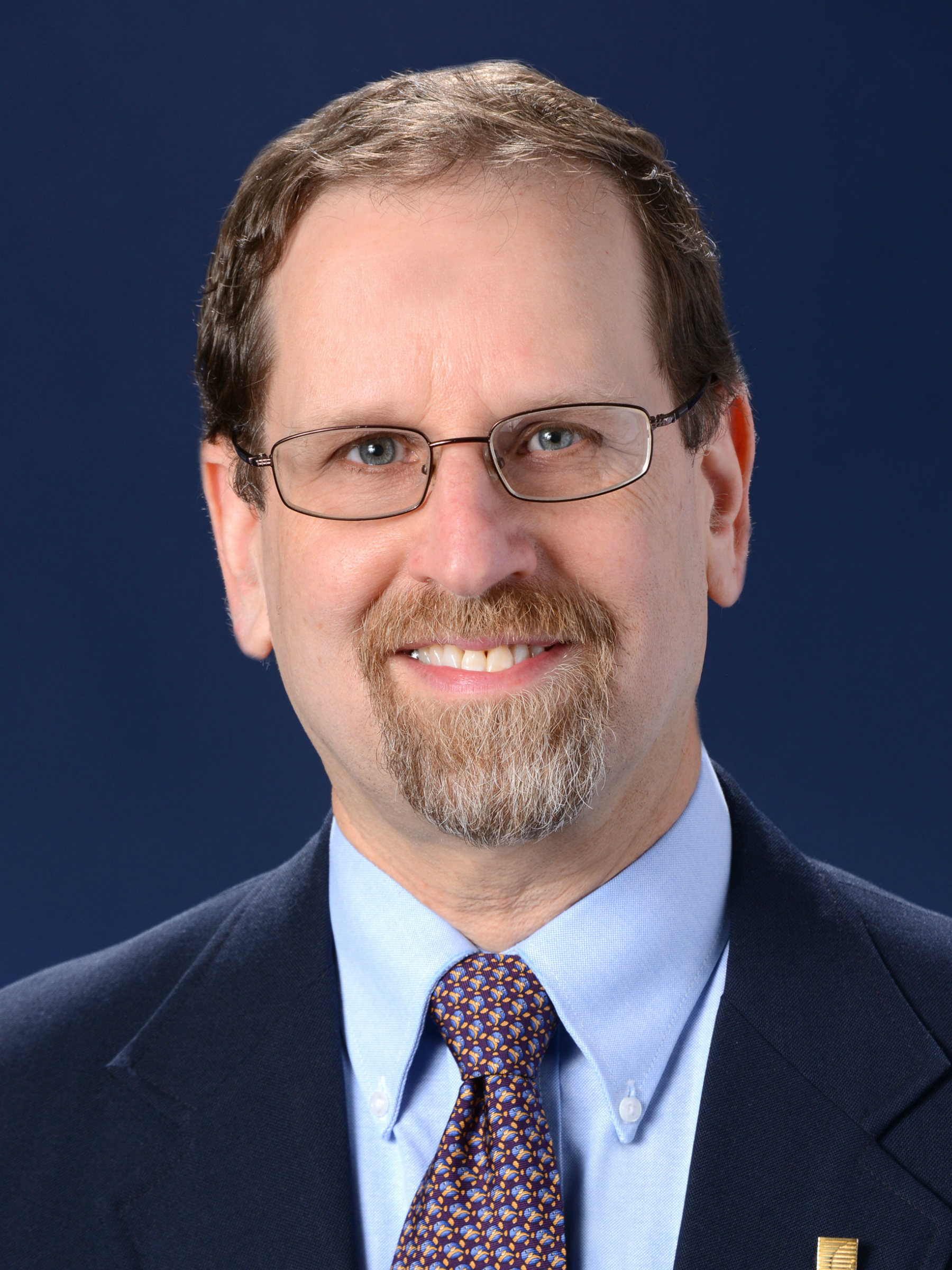 Dr. Robert S. Fish is President-elect of the IEEE Standards Association and Chair of the IEEE Technical Activities Committee on Standards. Dr. Fish is a faculty member in the Department of Computer Science of Princeton University and is also President of NETovations, LLC, a consulting company focused on communications and networking innovation. From 2007 to 2010, he was Chief Product Officer and Senior VP at Mformation, Inc., a company specializing in carrier software for mobile device management. From 1997 to 2007, Rob was Vice President and Managing Director of Panasonic US R&D laboratories working on embedding networking into consumer devices. Prior to this, he was Executive Director, Multimedia Communications Research at Bellcore/Telcordia after starting his career at Bell Laboratories. He received his doctorate from Stanford University. Besides his many publications, Dr. Fish has been awarded 17 patents. For his leadership and contributions to the IEEE Communications Society’s Multimedia Communications Technical Committee, Dr. Fish was the recipient of ComSoc’s MMTC Distinguished Service Award. In 2016, for his leadership in standards activities, Dr. Fish was awarded the Standards Medallion of the IEEE Standards Association.
Dr. Robert S. Fish is President-elect of the IEEE Standards Association and Chair of the IEEE Technical Activities Committee on Standards. Dr. Fish is a faculty member in the Department of Computer Science of Princeton University and is also President of NETovations, LLC, a consulting company focused on communications and networking innovation. From 2007 to 2010, he was Chief Product Officer and Senior VP at Mformation, Inc., a company specializing in carrier software for mobile device management. From 1997 to 2007, Rob was Vice President and Managing Director of Panasonic US R&D laboratories working on embedding networking into consumer devices. Prior to this, he was Executive Director, Multimedia Communications Research at Bellcore/Telcordia after starting his career at Bell Laboratories. He received his doctorate from Stanford University. Besides his many publications, Dr. Fish has been awarded 17 patents. For his leadership and contributions to the IEEE Communications Society’s Multimedia Communications Technical Committee, Dr. Fish was the recipient of ComSoc’s MMTC Distinguished Service Award. In 2016, for his leadership in standards activities, Dr. Fish was awarded the Standards Medallion of the IEEE Standards Association.
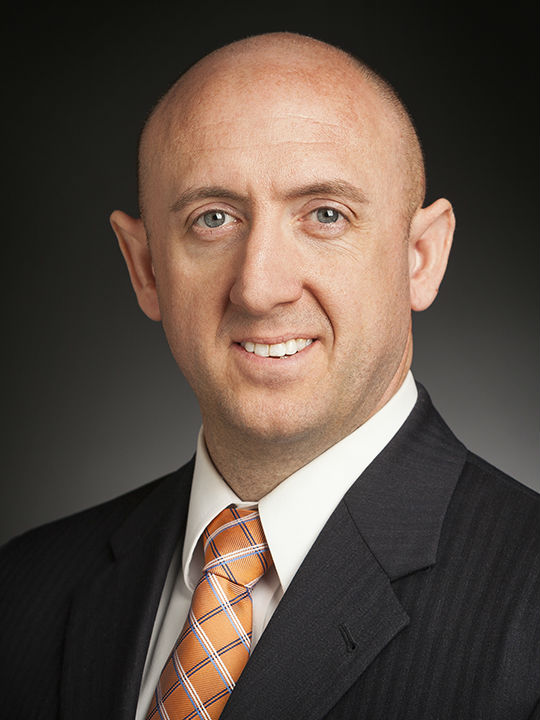 John Forte currently serves as the Deputy Executive for JHU/APL’s Homeland Protection Mission Area. His programs focus on securing the nation and its interests against asymmetric, terrorist-type attacks of catastrophic consequence through applied technology and systems engineering. Defeating chemical, biological, radiological, nuclear and explosive weapons as well as countering advanced persistent cyber threats is the mission area’s central challenge. John is the Mission Area’s lead in assured communications as well as in understanding and mitigating cyber threats of national importance, to include threats to state and local environments, critical infrastructure and to senior leaders and first responders. He currently serves on the Board of Advisors to Johns Hopkins University’s Information Security Institute (JHUISI) on various aspects of cybersecurity in support of their focus on research and education in information security, assurance and privacy. John also serves on the Strategic Advisory Board of SC Cyber in advising on the development of talent, techniques, and tools to defend critical, connected infrastructure within South Carolina. Further, John also serves as the Co-Director for the JHU Institute for Assured Autonomy. Conducting intelligent and autonomous systems assurance research and establishing partnerships across government, industry and academia for the safety, trust and security of the convergence of IoT, networks and infrastructure, artificial intelligence, machine learning and robotics within real-world environments.
John Forte currently serves as the Deputy Executive for JHU/APL’s Homeland Protection Mission Area. His programs focus on securing the nation and its interests against asymmetric, terrorist-type attacks of catastrophic consequence through applied technology and systems engineering. Defeating chemical, biological, radiological, nuclear and explosive weapons as well as countering advanced persistent cyber threats is the mission area’s central challenge. John is the Mission Area’s lead in assured communications as well as in understanding and mitigating cyber threats of national importance, to include threats to state and local environments, critical infrastructure and to senior leaders and first responders. He currently serves on the Board of Advisors to Johns Hopkins University’s Information Security Institute (JHUISI) on various aspects of cybersecurity in support of their focus on research and education in information security, assurance and privacy. John also serves on the Strategic Advisory Board of SC Cyber in advising on the development of talent, techniques, and tools to defend critical, connected infrastructure within South Carolina. Further, John also serves as the Co-Director for the JHU Institute for Assured Autonomy. Conducting intelligent and autonomous systems assurance research and establishing partnerships across government, industry and academia for the safety, trust and security of the convergence of IoT, networks and infrastructure, artificial intelligence, machine learning and robotics within real-world environments.
John came to the lab after collecting valuable experience serving in senior leadership and technical positions within the US military and in the public and private sectors.
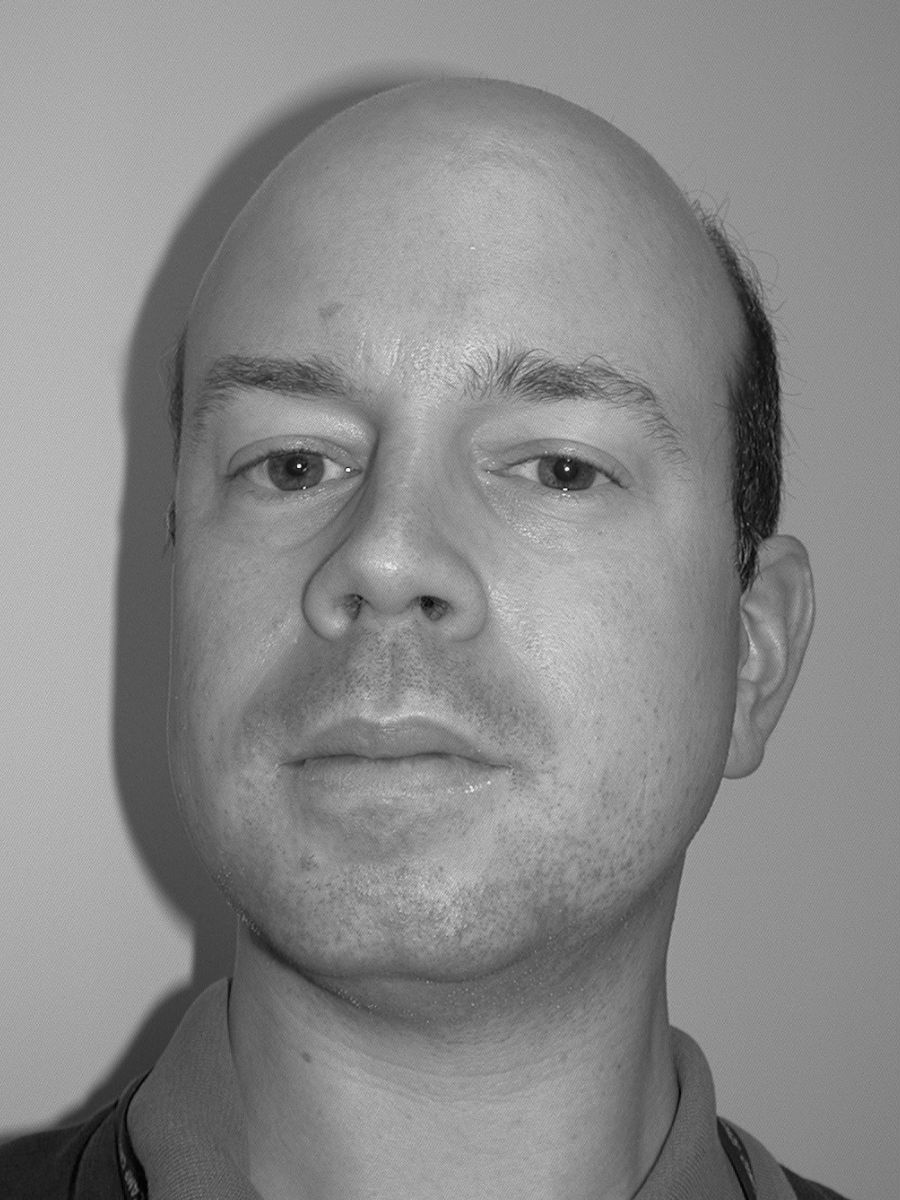 Dr. David Griffith earned a doctorate in electrical engineering from the University of Delaware; his dissertation examined time-frequency representations of signals that are resistant to impulse noise by incorporating nonlinear filtering techniques. He spent several years in industry at various companies working on modeling satellite communications systems. At NIST, he has worked on a variety of topics, including: techniques for improving the resiliency of optical networks, including optical burst-switched networks, communications systems for smart grid, and characterizing signaling overhead in the IEEE 802.21 Media Independent Handover (MIH) protocol. He is currently working on public safety communications, including D2D communications, and on resource allocation in 5G wireless networks.
Dr. David Griffith earned a doctorate in electrical engineering from the University of Delaware; his dissertation examined time-frequency representations of signals that are resistant to impulse noise by incorporating nonlinear filtering techniques. He spent several years in industry at various companies working on modeling satellite communications systems. At NIST, he has worked on a variety of topics, including: techniques for improving the resiliency of optical networks, including optical burst-switched networks, communications systems for smart grid, and characterizing signaling overhead in the IEEE 802.21 Media Independent Handover (MIH) protocol. He is currently working on public safety communications, including D2D communications, and on resource allocation in 5G wireless networks.
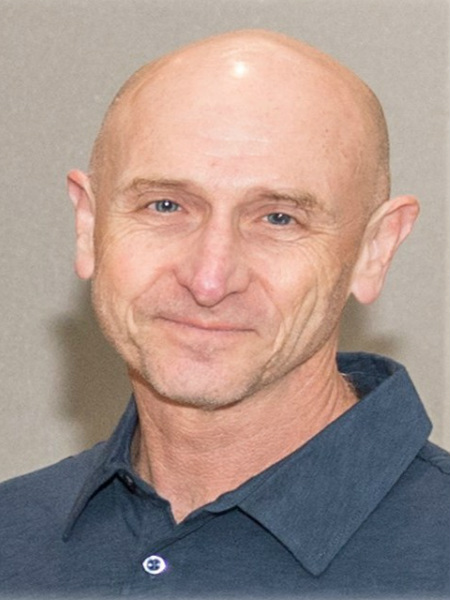 Issy Kipnis is a Senior Principal Engineer who joined Intel in 2000. He is a Senior Technologist in the Communications and Devices Group. In his 30+ years in the industry he has been involved in the design and development of analog, IO, RF, sensors, storage, wired and wireless communication systems. Issy has authored or co-authored more than 60 papers, holds 14 US patents and is a Senior Member of the IEEE. Issy was born in Mexico City and holds an Ingeniero en Electrónica (BSEE) degree from the Universidad Autónoma Metropolitana, Mexico City, and a MSEE degree from the University of Michigan, Ann Arbor. His prior experience includes positions at Fairchild Camera and Instruments, Avantek, Lawrence Berkeley National Laboratory and HP/Agilent Technologies.
Issy Kipnis is a Senior Principal Engineer who joined Intel in 2000. He is a Senior Technologist in the Communications and Devices Group. In his 30+ years in the industry he has been involved in the design and development of analog, IO, RF, sensors, storage, wired and wireless communication systems. Issy has authored or co-authored more than 60 papers, holds 14 US patents and is a Senior Member of the IEEE. Issy was born in Mexico City and holds an Ingeniero en Electrónica (BSEE) degree from the Universidad Autónoma Metropolitana, Mexico City, and a MSEE degree from the University of Michigan, Ann Arbor. His prior experience includes positions at Fairchild Camera and Instruments, Avantek, Lawrence Berkeley National Laboratory and HP/Agilent Technologies.
 Julius Knapp has been with the FCC for 44 years and has served as the Chief of the FCC’s Office of Engineering and Technology (OET) since 2006. OET is the Commission’s primary resource for engineering expertise and provides technical support to the Chairman, Commissioners and FCC Bureaus and Offices.
Julius Knapp has been with the FCC for 44 years and has served as the Chief of the FCC’s Office of Engineering and Technology (OET) since 2006. OET is the Commission’s primary resource for engineering expertise and provides technical support to the Chairman, Commissioners and FCC Bureaus and Offices.
He received the FCC’s Silver and Gold Medal Awards for distinguished service at the Commission as well as the Presidential Distinguished Rank Award for exceptional achievement in the career Senior Executive Service. Mr. Knapp has been the recipient of the Eugene C. Bowler award for exceptional professionalism and dedication to public service; the Federal Communications Bar Association Excellence in Government Service Award; the WCAI Government Leadership award; the National Spectrum Management Association Fellow Award; the Association of Federal Communications Consulting Engineers E. Noel Luddy Award; the Satellite Industry Association Satellite Leadership in Government Award; and, the Dynamic Spe3ctrum Alliance Lifetime Achievement Award. Mr. Knapp is a Life Member of the IEEE. He received a bachelor’s degree in electrical engineering from the City College of New York in 1974.
 Mr. Fred Moorefield is the Acting Principal Director to the Deputy Chief Information Officer for Command, Control, Communications and Computers and Information Infrastructure Capabilities (C4IIC), Office of the Secretary of Defense, Chief Information Officer. As Principal Director, Mr. Moorefield provides technical expertise and broad guidance on policy, programmatic and technical issues relating to C4IIC to integrate and synchronize defense-wide communications and infrastructure programs. He also advises on efforts to achieve and maintain information dominance for the Department of Defense. He manages efforts defining DoD policies and strategies for design, architecture, interoperability standards, capability development and sustainment of critical command and control and communications for nuclear and non-nuclear strategic strike, integrated missile defense, Defense and National Leadership Command Capabilities, and spectrum.
Mr. Fred Moorefield is the Acting Principal Director to the Deputy Chief Information Officer for Command, Control, Communications and Computers and Information Infrastructure Capabilities (C4IIC), Office of the Secretary of Defense, Chief Information Officer. As Principal Director, Mr. Moorefield provides technical expertise and broad guidance on policy, programmatic and technical issues relating to C4IIC to integrate and synchronize defense-wide communications and infrastructure programs. He also advises on efforts to achieve and maintain information dominance for the Department of Defense. He manages efforts defining DoD policies and strategies for design, architecture, interoperability standards, capability development and sustainment of critical command and control and communications for nuclear and non-nuclear strategic strike, integrated missile defense, Defense and National Leadership Command Capabilities, and spectrum.
Mr. Moorefield joined Federal service in 1989 in the Air Force as a civil servant, where he served for 19 years doing Research and Develop and Acquisition at Wright Patterson Air Force Base Air Force Research Labs. He also served in the Defense Information Systems Agency at the Joint Spectrum Center for four years. He has been a member of the Senior Executive Corps since 2012.
His education includes a Bachelor degree in mathematics from Wilberforce University, located in Wilberforce Ohio and a Bachelor and Master of Electrical Engineering degree from the University of Dayton in Dayton Ohio.
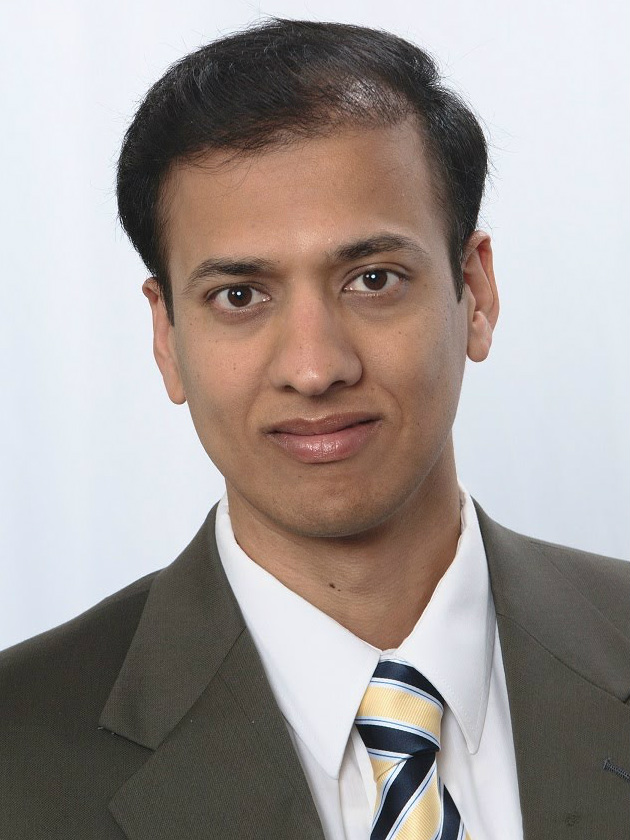 Dr. Thyaga Nandagopal is the Deputy Division Director of the Computing and Communication Foundations (CCF) Division in the Directorate of Computer and Information Science and Engineering (CISE) at the National Science Foundation. He previously served as a Program Director at the NSF in the Networking Technologies and Systems (NeTS) program, where he managed mobile systems and wireless networking research across multiple funding programs with an annual budget of more than $50 million. At NSF, he is also leading the Platforms for Advanced Wireless Research program, a $100 million effort announced in July 2016. He also serves as the co-chair of the Wireless Spectrum Research and Development Senior Steering Group (WSRD SSG), which co-ordinates spectrum-related research and development activities across the federal government. He is an IEEE Fellow, and holds a doctorate in electrical engineering from the University of Illinois at Urbana-Champaign.
Dr. Thyaga Nandagopal is the Deputy Division Director of the Computing and Communication Foundations (CCF) Division in the Directorate of Computer and Information Science and Engineering (CISE) at the National Science Foundation. He previously served as a Program Director at the NSF in the Networking Technologies and Systems (NeTS) program, where he managed mobile systems and wireless networking research across multiple funding programs with an annual budget of more than $50 million. At NSF, he is also leading the Platforms for Advanced Wireless Research program, a $100 million effort announced in July 2016. He also serves as the co-chair of the Wireless Spectrum Research and Development Senior Steering Group (WSRD SSG), which co-ordinates spectrum-related research and development activities across the federal government. He is an IEEE Fellow, and holds a doctorate in electrical engineering from the University of Illinois at Urbana-Champaign.
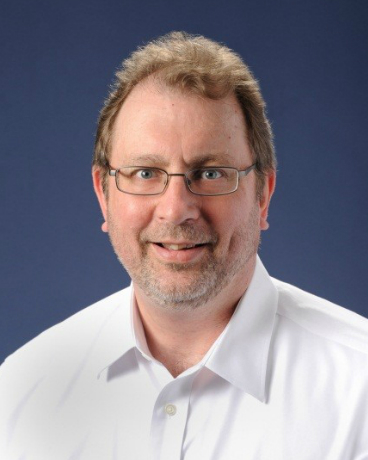 Paul Nikolich has been serving the data communications and broadband industries developing technology, standards, and intellectual property and establishing new ventures as an executive consultant and angel investor since 2001. He is an IEEE Fellow and has served as Chairman of the IEEE 802 LAN/MAN Standards Committee since 2001. As 802 Chairman he provides oversight for 75 active 802 standards and the 50+ concurrent 802 activities in wired and wireless communications networking. 802 has more than 750 active members and manages relationships between IEEE 802 and global/regional standards bodies such as ISO, ITU, ETSI, regulatory bodies and industry alliances. He is a member of the IEEE Computer Society Standards Activities Board and active leader in the IEEE, the IEEE Computer Society, and the IEEE Standards Association. He is a partner in YAS Broadband Friends LLC and holds several patents, serves on the boards of directors and technology advisory boards of companies developing emerging communications technology along with being a board member of the University of New Hampshire’s Broadband Center of Excellence. Mr. Nikolich has held technical leadership positions at large and small networking and technology companies (e.g., Broadband Access Systems, Racal-Datacom, Applitek, Motorola, Analogic). In 1978-1979 he received a bachelor's degree in electrical engineering, a bachelor's degree in biology and a master's degree in biomedical engineering from Polytechnic University in Brooklyn, NY (now the NYU Tandon School of Engineering).
Paul Nikolich has been serving the data communications and broadband industries developing technology, standards, and intellectual property and establishing new ventures as an executive consultant and angel investor since 2001. He is an IEEE Fellow and has served as Chairman of the IEEE 802 LAN/MAN Standards Committee since 2001. As 802 Chairman he provides oversight for 75 active 802 standards and the 50+ concurrent 802 activities in wired and wireless communications networking. 802 has more than 750 active members and manages relationships between IEEE 802 and global/regional standards bodies such as ISO, ITU, ETSI, regulatory bodies and industry alliances. He is a member of the IEEE Computer Society Standards Activities Board and active leader in the IEEE, the IEEE Computer Society, and the IEEE Standards Association. He is a partner in YAS Broadband Friends LLC and holds several patents, serves on the boards of directors and technology advisory boards of companies developing emerging communications technology along with being a board member of the University of New Hampshire’s Broadband Center of Excellence. Mr. Nikolich has held technical leadership positions at large and small networking and technology companies (e.g., Broadband Access Systems, Racal-Datacom, Applitek, Motorola, Analogic). In 1978-1979 he received a bachelor's degree in electrical engineering, a bachelor's degree in biology and a master's degree in biomedical engineering from Polytechnic University in Brooklyn, NY (now the NYU Tandon School of Engineering).
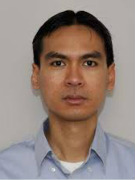 Dr. Rapeepat Ratasuk (This email address is being protected from spambots. You need JavaScript enabled to view it.) received a doctorate in electrical engineering from Northwestern University, Evanston, Illinois, in 2000. He is currently a Principal Research Specialist with Nokia Bell Labs, Naperville, Illinois. He has extensive experience in cellular system design and analysis, including algorithm development, performance analysis and validation, physical-layer modeling, and simulations. He has more than 70 issued patents and published more than 70 journal and conference papers. He is a co-author of the book titled "Essentials of LTE and LTE-A". His current research areas are in the areas of 5G wireless networks, mmWave, and machine-type communications.
Dr. Rapeepat Ratasuk (This email address is being protected from spambots. You need JavaScript enabled to view it.) received a doctorate in electrical engineering from Northwestern University, Evanston, Illinois, in 2000. He is currently a Principal Research Specialist with Nokia Bell Labs, Naperville, Illinois. He has extensive experience in cellular system design and analysis, including algorithm development, performance analysis and validation, physical-layer modeling, and simulations. He has more than 70 issued patents and published more than 70 journal and conference papers. He is a co-author of the book titled "Essentials of LTE and LTE-A". His current research areas are in the areas of 5G wireless networks, mmWave, and machine-type communications.
 Dr. Tom Rondeau joined DARPA as a program manager in the Microsystems Technology Office in May 2016. His research interests include adaptive and reconfigurable radios, improving the development cycle for new signal-processing techniques, and creating general purpose electromagnetic systems.
Dr. Tom Rondeau joined DARPA as a program manager in the Microsystems Technology Office in May 2016. His research interests include adaptive and reconfigurable radios, improving the development cycle for new signal-processing techniques, and creating general purpose electromagnetic systems.
Prior to joining DARPA, Dr. Rondeau was the maintainer and lead developer of the GNU Radio project and a consultant on signal processing and wireless communications. He worked as a visiting researcher with the University of Pennsylvania and as an Adjunct with the IDA Center for Communications Research in Princeton, NJ.
Dr. Rondeau holds a Ph.D. in electrical engineering from Virginia Tech and won the 2007 Outstanding Dissertation Award in math, science, and engineering from the Council of Graduate Schools for his work in artificial intelligence in wireless communications.
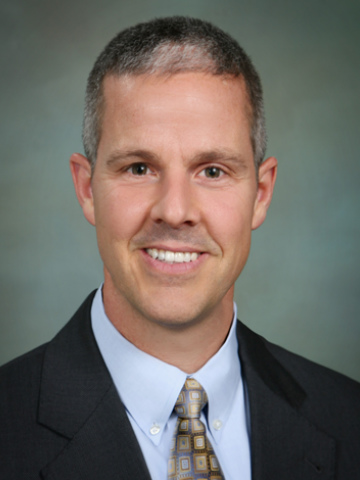 Christopher Sambar, Senior Vice President, AT&T FirstNet, AT&T Business. With more than 15 years of telecommunications experience, Chris Sambar currently serves as Senior Vice President AT&T FirstNet. In this role, Chris is responsible for delivering on AT&T's commitment to successfully deploy the nation's first public safety broadband network.
Christopher Sambar, Senior Vice President, AT&T FirstNet, AT&T Business. With more than 15 years of telecommunications experience, Chris Sambar currently serves as Senior Vice President AT&T FirstNet. In this role, Chris is responsible for delivering on AT&T's commitment to successfully deploy the nation's first public safety broadband network.
Chris joined SBC Communications as part of the Leadership Development Program in 2002 with his first rotation in Network Operations as an installation and repair supervisor. Following his network assignment he held multiple sales positions in AT&T Business Solutions where he worked with C-level decision makers across various industries. Chris then moved to San Diego, California, to build various direct and indirect sales channels and coordinate the launch, marketing and sales of AT&T's U-verse television product. His success with U-verse sales led to his move to the position of Retail Director of Sales for the San Diego market area where he led all retail, door-to-door and event sales teams in the market.
Chris was then promoted to Executive Director of Retail Learning Services, Human Resources, responsible for training 40,000 retail sales people throughout the United States. Following this assignment Chris served as the Vice President and General Manager of the Virginia/West Virginia and Southern Texas markets where he was responsible for overseeing all AT&T wireline and wireless sales, service, network, marketing and public relations for the respective territories. Prior to his current role Chris was part of the Corporate Strategy Team where he assisted with the allocation of AT&T’s roughly $22 billion in annual capital spending.
Chris holds an MBA from the University of Southern California and a bachelor's degree from The United States Naval Academy. Following graduation from the Naval Academy, he served seven years on active duty and 16 years in the reserves with multiple deployments throughout Europe, the Middle East and one tour of duty during the Iraq war in 2005 and 2006. He is married with 4 children and enjoys spending as much of his free time as possible with his family.
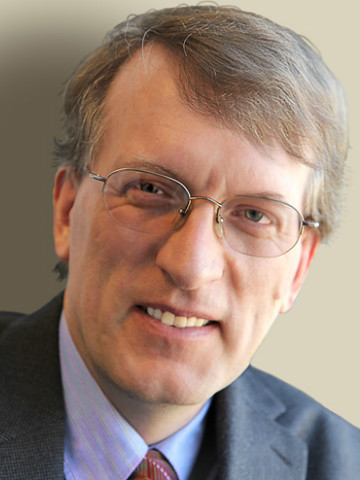 Prof. Henning Schulzrinne, Levi Professor of Computer Science at Columbia University, received his doctorate from the University of Massachusetts in Amherst, Massachusetts. He was an MTS at AT&T Bell Laboratories and an associate department head at GMD-Fokus (Berlin), before joining the Computer Science and Electrical Engineering departments at Columbia University. He served as chair of the Department of Computer Science from 2004 to 2009, as Engineering Fellow, Technology Advisor and Chief Technology Officer at the U.S. Federal Communications Commission (FCC) from 2010 to 2017.
Prof. Henning Schulzrinne, Levi Professor of Computer Science at Columbia University, received his doctorate from the University of Massachusetts in Amherst, Massachusetts. He was an MTS at AT&T Bell Laboratories and an associate department head at GMD-Fokus (Berlin), before joining the Computer Science and Electrical Engineering departments at Columbia University. He served as chair of the Department of Computer Science from 2004 to 2009, as Engineering Fellow, Technology Advisor and Chief Technology Officer at the U.S. Federal Communications Commission (FCC) from 2010 to 2017.
He has published more than 250 journal and conference papers, and more than 70 Internet RFCs. Protocols co-developed by him, such as RTP, RTSP and SIP, are used by almost all Internet telephony and multimedia applications.
He is a Fellow of the ACM and IEEE, has received the New York City Mayor's Award for Excellence in Science and Technology, the VON Pioneer Award, TCCC service award, IEEE Internet Award, IEEE Region 1 William Terry Award for Lifetime Distinguished Service to IEEE, the UMass Computer Science Outstanding Alumni recognition, and is a member of the Internet Hall of Fame.
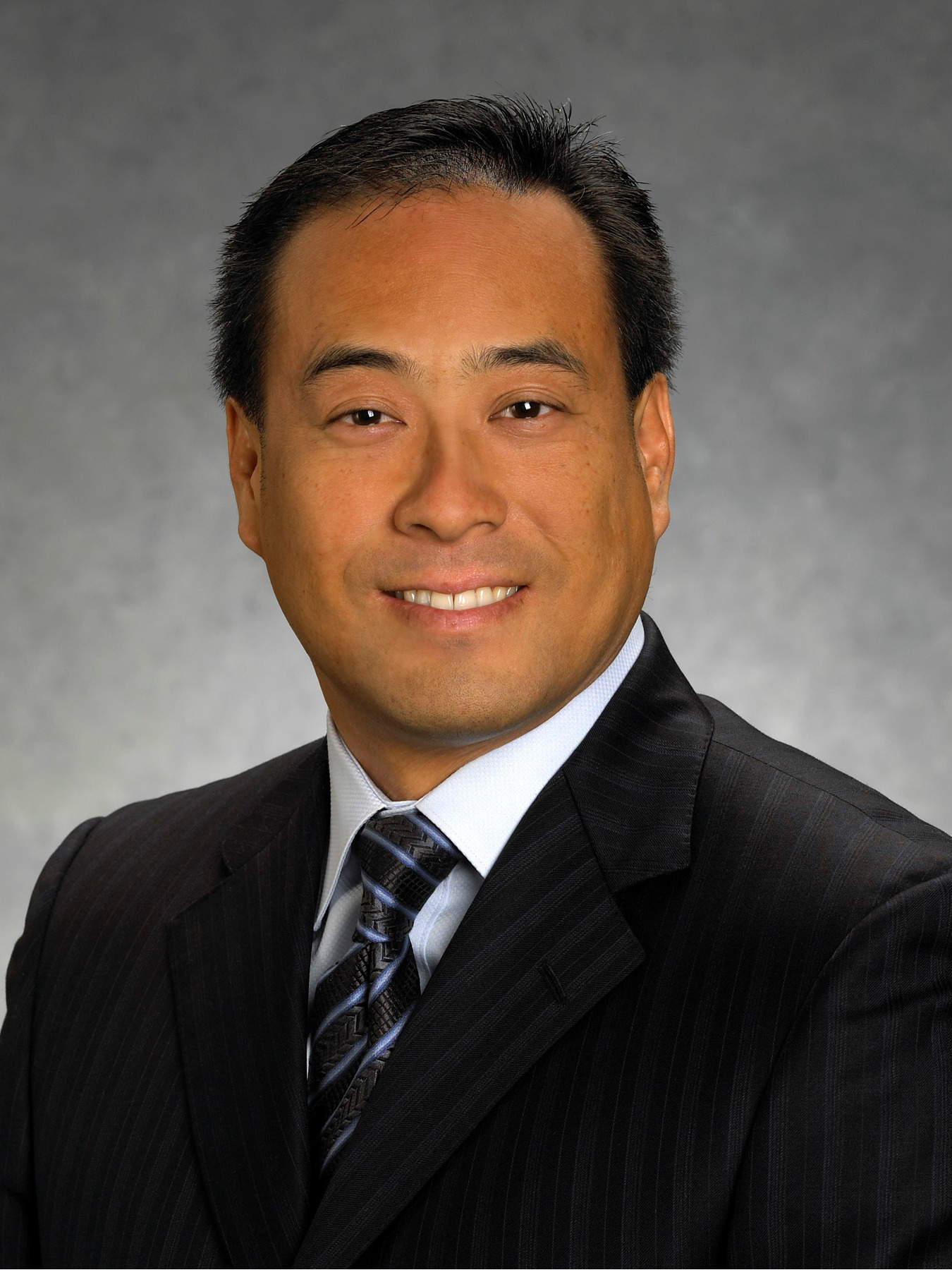 Manuel Uhm is the Director of Marketing at Ettus Research, a National Instruments company, the leader in Software Defined Radio platforms. Manuel has business responsibility for the Ettus USRP (GNU Radio open source-based), NI USRP (LabVIEW-based) and NI ATCA portfolios. As such, he has responsibility for SDR portfolio management including product strategy, roadmaps, and pricing. Manuel is also the Chief Marketing Officer of the Wireless Innovation Forum (formerly the SDR Forum), which is responsible for the SCA (Software Communications Architecture) standard for military radios, and CBRS (Citizen’s Broadband Radio Service) for spectrum sharing between naval radar and commercial broadband services. He has served on the Board since 2003 in various roles including Chair of the Board of Directors, Chair of the Markets Committee, Chair of the User Requirements Committee, and Chief Financial Officer.
Manuel Uhm is the Director of Marketing at Ettus Research, a National Instruments company, the leader in Software Defined Radio platforms. Manuel has business responsibility for the Ettus USRP (GNU Radio open source-based), NI USRP (LabVIEW-based) and NI ATCA portfolios. As such, he has responsibility for SDR portfolio management including product strategy, roadmaps, and pricing. Manuel is also the Chief Marketing Officer of the Wireless Innovation Forum (formerly the SDR Forum), which is responsible for the SCA (Software Communications Architecture) standard for military radios, and CBRS (Citizen’s Broadband Radio Service) for spectrum sharing between naval radar and commercial broadband services. He has served on the Board since 2003 in various roles including Chair of the Board of Directors, Chair of the Markets Committee, Chair of the User Requirements Committee, and Chief Financial Officer.
 Prof. Michele Zorzi, University of Padova, Italy. Michele Zorzi received his Laurea and Ph.D. degrees in electrical engineering from the University of Padova in 1990 and 1994, respectively. During academic year 1992/1993 he was on leave at the University of California San Diego (UCSD). After being affiliated with the Dipartimento di Elettronica e Informazione, Politecnico di Milano, Italy, the Center for Wireless Communications at UCSD, and the University of Ferrara, in November 2003 he joined the faculty of the Information Engineering Department of the University of Padova, where he is currently a professor. His present research interests include performance evaluation in mobile communications systems, random access in mobile radio networks, ad hoc and sensor networks and IoT, energy constrained communications protocols, 5G millimeter-wave cellular systems, and underwater communications and networking. He was Editor-in-Chief of IEEE Wireless Communications from 2003 to 2005, Editor-in-Chief of IEEE Transactions on Communications from 2008 to 2011, and is currently the founding Editor-in-Chief of IEEE Transactions on Cognitive Communications and Networking. He was Guest Editor for several Special Issues in IEEE Personal Communications, IEEE Wireless Communications, IEEE Network, and IEEE JSAC. He served as a Member-at-Large in the Board of Governors of the IEEE Communications Society from 2009 to 2011, and as its Director of Education from 2014 to 2015. He is a Fellow of the IEEE.
Prof. Michele Zorzi, University of Padova, Italy. Michele Zorzi received his Laurea and Ph.D. degrees in electrical engineering from the University of Padova in 1990 and 1994, respectively. During academic year 1992/1993 he was on leave at the University of California San Diego (UCSD). After being affiliated with the Dipartimento di Elettronica e Informazione, Politecnico di Milano, Italy, the Center for Wireless Communications at UCSD, and the University of Ferrara, in November 2003 he joined the faculty of the Information Engineering Department of the University of Padova, where he is currently a professor. His present research interests include performance evaluation in mobile communications systems, random access in mobile radio networks, ad hoc and sensor networks and IoT, energy constrained communications protocols, 5G millimeter-wave cellular systems, and underwater communications and networking. He was Editor-in-Chief of IEEE Wireless Communications from 2003 to 2005, Editor-in-Chief of IEEE Transactions on Communications from 2008 to 2011, and is currently the founding Editor-in-Chief of IEEE Transactions on Cognitive Communications and Networking. He was Guest Editor for several Special Issues in IEEE Personal Communications, IEEE Wireless Communications, IEEE Network, and IEEE JSAC. He served as a Member-at-Large in the Board of Governors of the IEEE Communications Society from 2009 to 2011, and as its Director of Education from 2014 to 2015. He is a Fellow of the IEEE.
Organizers
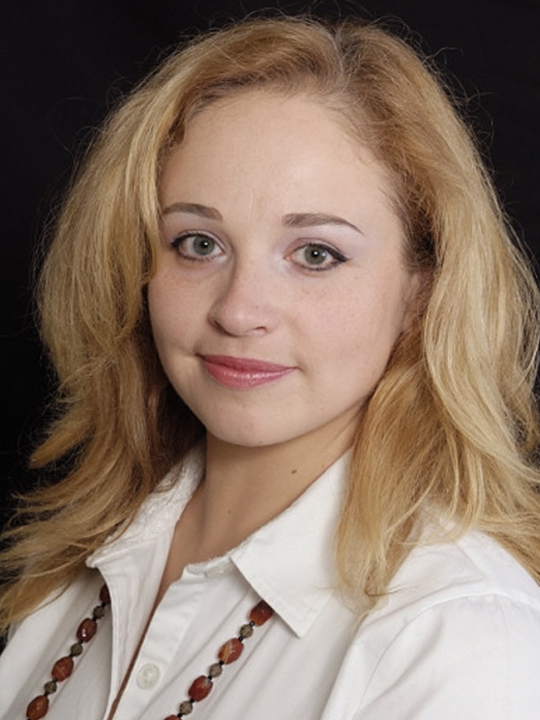 Julia Andrusenko (This email address is being protected from spambots. You need JavaScript enabled to view it.) received her bachelor's and master's degrees in electrical engineering in 2002 from Drexel University, Philadelphia, PA. She is a senior communications engineer at APL and is the Chief Engineer of the Tactical Wireless Systems group of APL. Ms. Andrusenko has an extensive background in communications theory, wireless networking, satellite communications, Radio Frequency (RF) propagation prediction, communications systems vulnerability, computer simulation of communications systems, evolutionary computation, genetic algorithms/programming, MIMO, and millimeter wave technologies. She also has a substantial experience developing electronic warfare methodologies for various advanced commercial communications systems and military data links. Ms. Andrusenko is a published author of many technical papers and has recently co-authored a book titled “Wireless Internetworking: Understanding Internetworking Challenges” through Wiley/IEEE Press. Ms. Andrusenko is a member of the IEEE Communications Society.
Julia Andrusenko (This email address is being protected from spambots. You need JavaScript enabled to view it.) received her bachelor's and master's degrees in electrical engineering in 2002 from Drexel University, Philadelphia, PA. She is a senior communications engineer at APL and is the Chief Engineer of the Tactical Wireless Systems group of APL. Ms. Andrusenko has an extensive background in communications theory, wireless networking, satellite communications, Radio Frequency (RF) propagation prediction, communications systems vulnerability, computer simulation of communications systems, evolutionary computation, genetic algorithms/programming, MIMO, and millimeter wave technologies. She also has a substantial experience developing electronic warfare methodologies for various advanced commercial communications systems and military data links. Ms. Andrusenko is a published author of many technical papers and has recently co-authored a book titled “Wireless Internetworking: Understanding Internetworking Challenges” through Wiley/IEEE Press. Ms. Andrusenko is a member of the IEEE Communications Society.
 Dr. Cherita Corbett is the Chief Scientist for the Communication and Networking Systems Group at Johns Hopkins University Applied Physics Laboratory. She guides research and development strategy and activities focused on resilient communications for military operations and critical infrastructure. Her current research interests include: secure mobile technologies, secure tactical communication systems, and insider threat protection. Prior to joining APL, Dr. Corbett was a Senior Computer Scientist at SRI International where she performed research on self-healing cellular networks, vehicular security, and IoT security. She also provided programmatic support to the Cyber Security Division of DHS S&T in the area of mobile technology. She has published over 30 technical manuscripts and holds a U.S. patent in cyber security. She holds a Ph.D. in Electrical & Computer Engineering from Georgia Institute of Technology.
Dr. Cherita Corbett is the Chief Scientist for the Communication and Networking Systems Group at Johns Hopkins University Applied Physics Laboratory. She guides research and development strategy and activities focused on resilient communications for military operations and critical infrastructure. Her current research interests include: secure mobile technologies, secure tactical communication systems, and insider threat protection. Prior to joining APL, Dr. Corbett was a Senior Computer Scientist at SRI International where she performed research on self-healing cellular networks, vehicular security, and IoT security. She also provided programmatic support to the Cyber Security Division of DHS S&T in the area of mobile technology. She has published over 30 technical manuscripts and holds a U.S. patent in cyber security. She holds a Ph.D. in Electrical & Computer Engineering from Georgia Institute of Technology.
 Dr. Ashutosh Dutta is currently Senior Wireless Communication Research Scientist at Johns Hopkins University Applied Physics Labs (Johns Hopkins APL). Most recently he served as Principal Member of Technical Staff at AT&T Labs in Middletown, New Jersey. His career, spanning more than 30 years, includes Director of Technology Security and Lead Member of Technical Staff at AT&T, CTO of Wireless at a Cybersecurity company NIKSUN, Inc., Senior Scientist in Telcordia Research, Director of Central Research Facility at Columbia University, adjunct faculty at NJIT, and Computer Engineer with TATA Motors. He has more than 90 conference and journal publications, three book chapters, and 30 issued patents. Ashutosh is co-author of the book, titled, “Mobility Protocols and Handover Optimization: Design,Evaluation and Application,” published by IEEE and John & Wiley that has recently been translated into Chinese Language. Ashutosh served as the chair for IEEE Princeton / Central Jersey Section, Industry Relation Chair for Region 1 and MGA, Pre-University Coordinator for IEEE MGA and vice chair of Education Society Chapter of PCJS. He co-founded the IEEE STEM conference (ISEC) and helped to implement EPICS (Engineering Projects in Community Service) projects in several high schools. Ashutosh currently serves as the Director of Industry Outreach for IEEE Communications Society and is the founding co-chair for IEEE Future Networks initiative. He also serves as IEEE Communications Society’s Distinguished Lecturer for 2017-2018. He was recipient of the prestigious 2009 IEEE MGA Leadership award and 2010 IEEE-USA professional leadership award. Ashutosh obtained his BS in Electrical Engineering from NIT Rourkela, India, MS in Computer Science from NJIT, and Ph.D. in Electrical Engineering from Columbia University under the supervision of Prof. Henning Schulzrinne. Ashutosh is a senior member of IEEE and ACM.
Dr. Ashutosh Dutta is currently Senior Wireless Communication Research Scientist at Johns Hopkins University Applied Physics Labs (Johns Hopkins APL). Most recently he served as Principal Member of Technical Staff at AT&T Labs in Middletown, New Jersey. His career, spanning more than 30 years, includes Director of Technology Security and Lead Member of Technical Staff at AT&T, CTO of Wireless at a Cybersecurity company NIKSUN, Inc., Senior Scientist in Telcordia Research, Director of Central Research Facility at Columbia University, adjunct faculty at NJIT, and Computer Engineer with TATA Motors. He has more than 90 conference and journal publications, three book chapters, and 30 issued patents. Ashutosh is co-author of the book, titled, “Mobility Protocols and Handover Optimization: Design,Evaluation and Application,” published by IEEE and John & Wiley that has recently been translated into Chinese Language. Ashutosh served as the chair for IEEE Princeton / Central Jersey Section, Industry Relation Chair for Region 1 and MGA, Pre-University Coordinator for IEEE MGA and vice chair of Education Society Chapter of PCJS. He co-founded the IEEE STEM conference (ISEC) and helped to implement EPICS (Engineering Projects in Community Service) projects in several high schools. Ashutosh currently serves as the Director of Industry Outreach for IEEE Communications Society and is the founding co-chair for IEEE Future Networks initiative. He also serves as IEEE Communications Society’s Distinguished Lecturer for 2017-2018. He was recipient of the prestigious 2009 IEEE MGA Leadership award and 2010 IEEE-USA professional leadership award. Ashutosh obtained his BS in Electrical Engineering from NIT Rourkela, India, MS in Computer Science from NJIT, and Ph.D. in Electrical Engineering from Columbia University under the supervision of Prof. Henning Schulzrinne. Ashutosh is a senior member of IEEE and ACM.
 Jared Everett is a senior wireless communications research engineer in the Wireless Cyber Capabilities group at the Johns Hopkins University Applied Physics Laboratory (Johns Hopkins APL). Since joining APL in 2009, his research has focused broadly on the use of cellular technologies for defense and national security applications. He has a deep knowledge of LTE and emerging 5G standards, specializing in cellular air interfaces and end-to-end systems. He is a co-author of the book, “Wireless Networking: Understanding Internetworking Challenges,” published by Wiley/IEEE Press. His current research interests include innovative approaches to spectrum sharing in 5G networks. Jared holds M.S. and B.S. degrees in electrical engineering from North Carolina State University. He also holds a B.A. degree in music.
Jared Everett is a senior wireless communications research engineer in the Wireless Cyber Capabilities group at the Johns Hopkins University Applied Physics Laboratory (Johns Hopkins APL). Since joining APL in 2009, his research has focused broadly on the use of cellular technologies for defense and national security applications. He has a deep knowledge of LTE and emerging 5G standards, specializing in cellular air interfaces and end-to-end systems. He is a co-author of the book, “Wireless Networking: Understanding Internetworking Challenges,” published by Wiley/IEEE Press. His current research interests include innovative approaches to spectrum sharing in 5G networks. Jared holds M.S. and B.S. degrees in electrical engineering from North Carolina State University. He also holds a B.A. degree in music.
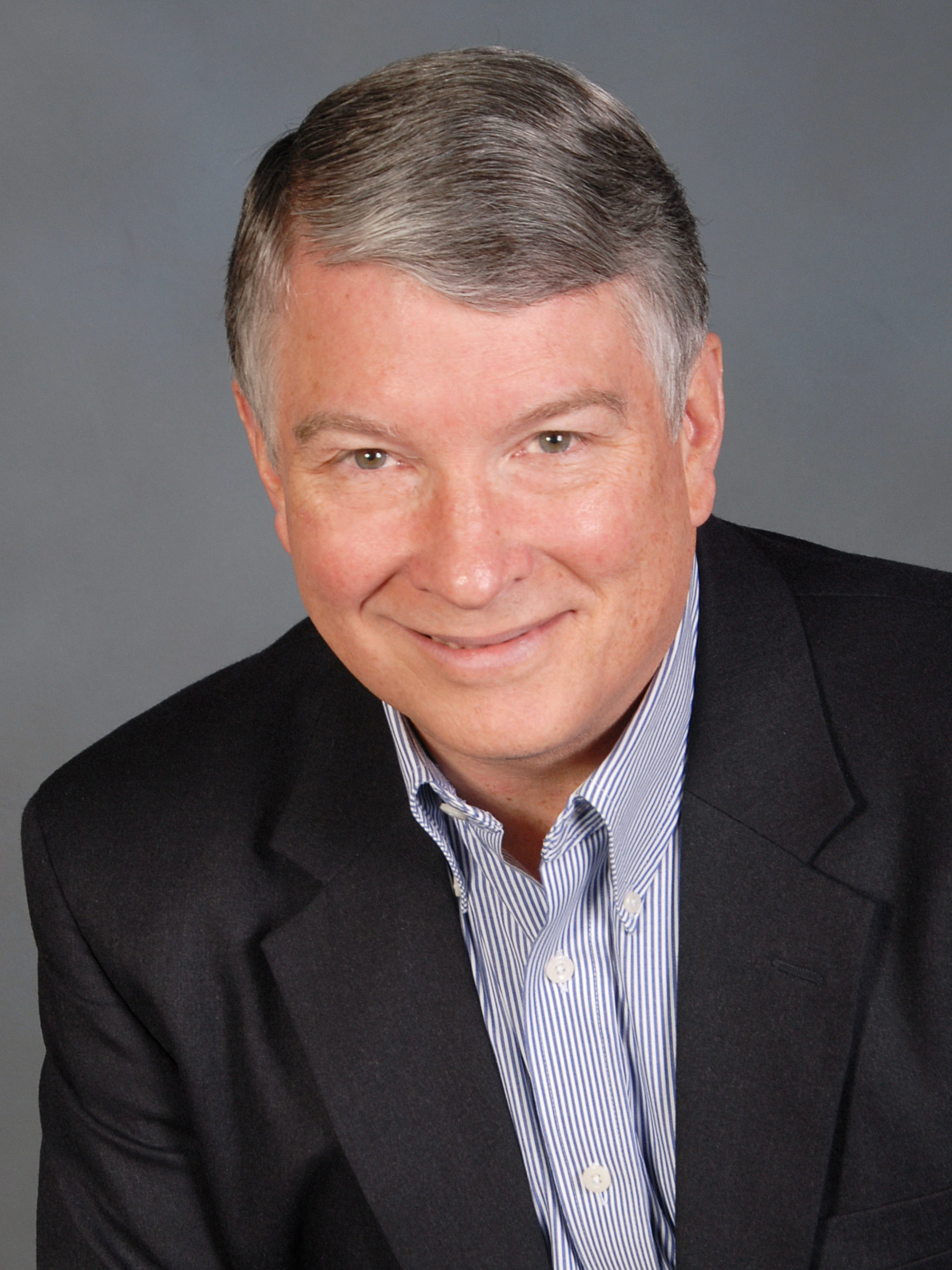 Douglas Holly, Principle, Eagle Management Group
Douglas Holly, Principle, Eagle Management Group
Doug brings a broad range of telecommunications, business leadership and management skills with a particular focus on project management, operational improvement and M&A. He currently heads up Eagle Management Group a consulting firm that provides general management, project management and strategic planning to improve operational performance. EMG also provides M&A selection, diligence support and integration services to businesses. He is a director of the Washington Section and chair its chapter of the Communications Society and also chair of the joint Washington/Northern Virginia chapter of the TEMS. He was finance chair for the IEEE GLOBECOM 2007 and 2016.
Doug holds a bachelor's and master's dress in electrical engineering from Rensselaer Polytechnic Institute.
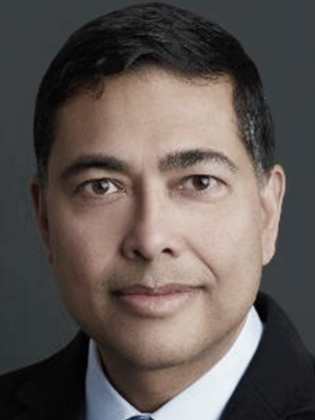
Narendra Mangra is a wireless mobility advisor, consultant and educator at GlobeNet. He has over 20 years of experience consulting in the mobile satellite and cellular communications, public safety communications, information technology, higher education, and government sectors. His experience spans strategy development, spectrum management, mobile network planning and system deployments, business & operational support systems, international roaming, and wireless education. Narendra is a co-chair with the IEEE Future Networks Initiative and is an Adjunct Professor at the George Mason University. He also works with the Redhorse Corporation in assisting federal agencies with mobility and enterprise communications services modernization. His current areas of interest include smart cities and interconnected ecosystems such as public safety, connected health, smart grid, and connected vehicles.



